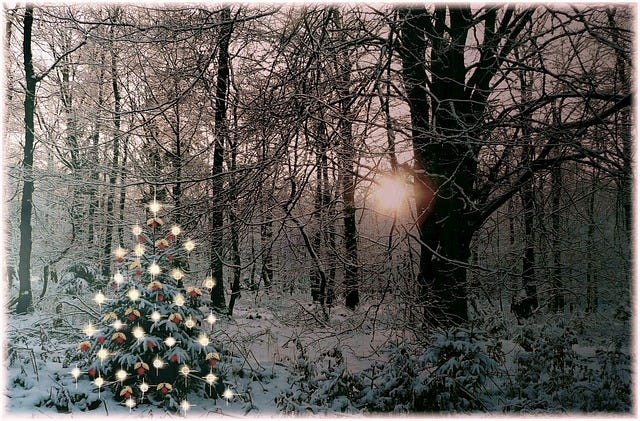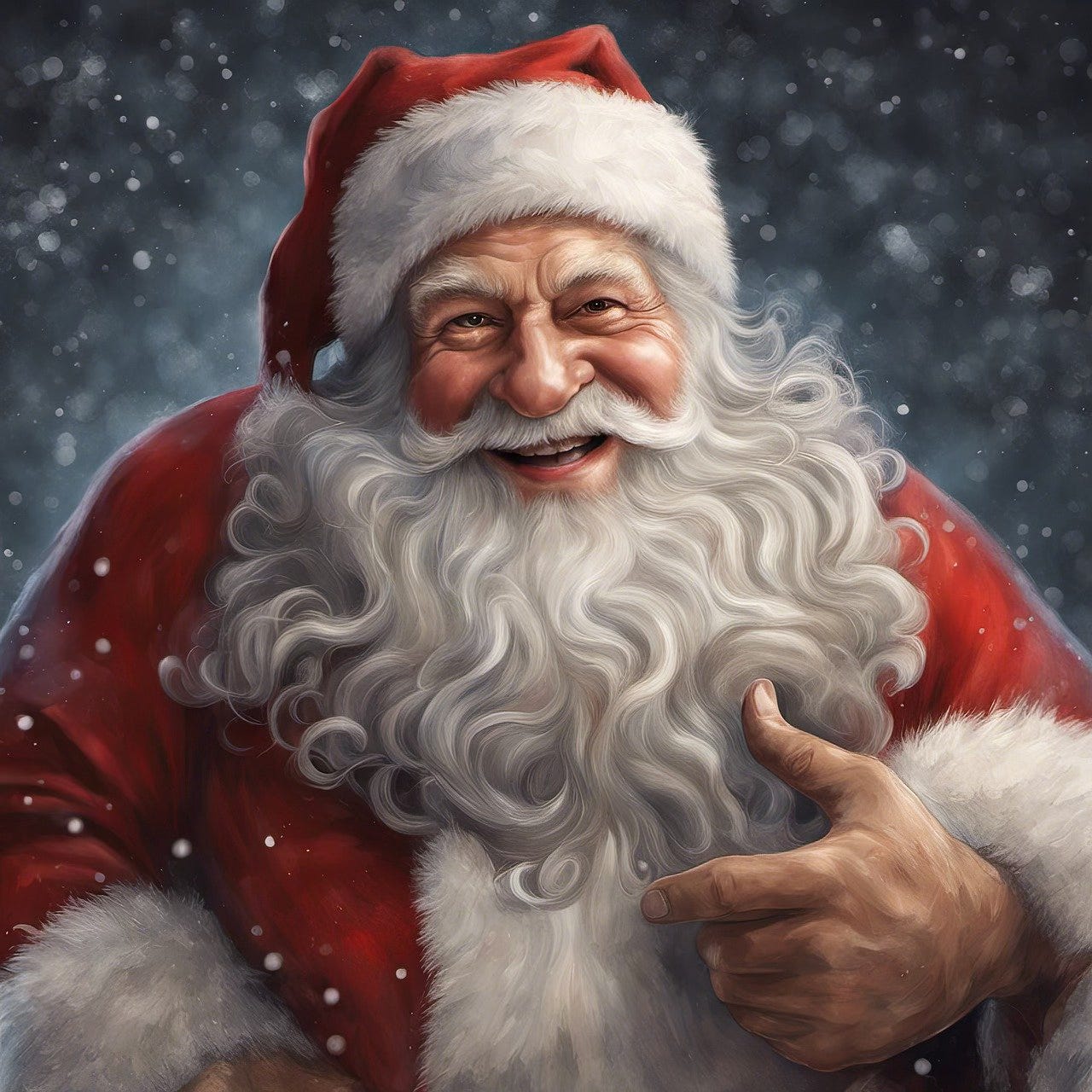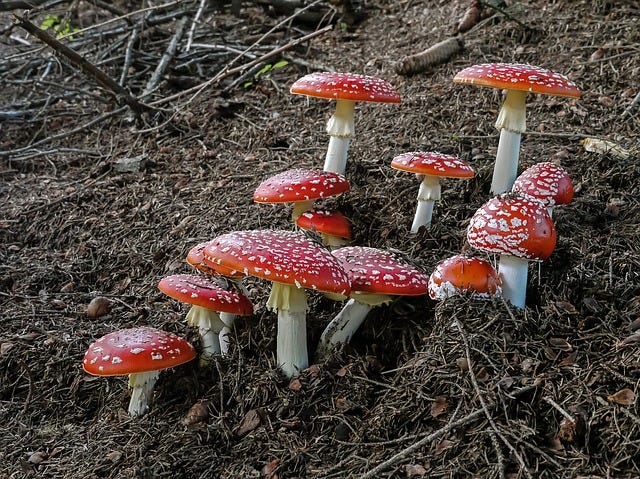Does Christmas Hold the Promise of "Light" After "Dark"?
During these short, dark days let’s remember this ancient Christmas knowledge that illumination always follows darkness & that with love and compassion we will re-light our nations & lives...
This coming weekend is Christmas Eve, a connection to some of the most ancient of all known northern European shamanic traditions. Like people living in the north for millennia, we continue to embrace them with regional, national, and religious tweaks.
It occurs during the week of the shortest day and longest night of the year in the northern hemisphere, when ancient holy men and women lit “yule logs” to push back the darkness and implore the gods or nature to bring back the light of summer.
As Henry Bourne wrote in 1725:
“For as both December and January were called Guili or Yule, upon Account of the Sun’s Returning, and the Increase of the Days; so, I am apt to believe, the Log has had the Name of the Yule-Log, from its being burnt as an Emblem of the returning Sun, and the Increase of its Light and Heat.”
When Louise and I lived in Stadtsteinach, Germany, Herr Mueller led us up a mountainside deep into the Franconian forest on Christmas eve in 1986 where our community had covered a pine tree with candles: we sang carols and he read aloud several bible verses.
He later told me that in ancient times the German shamans would set the tallest tree afire to re-ignite the sun and bring back longer days.

This concern with the shortest day of the year and being able to identify when the sun would begin to lengthen the days, heralding the return of the growing season (and food!), probably accounts for the “calendar stone” arrangements found across every northern hemisphere continent. The most recent was found under 40 feet of water in Lake Michigan and dates back 9,000 years.
Many traditions that tie Christmas back to the earlier “pagan” European religions it co-opted still exist.
Christmas carols, for example, started out as a pagan winter ceremony called “wassailing” to help fruit trees survive the winter and insure a good harvest the following year. By the middle ages it had turned into a Christmas-associated version of trick-or-treat where poor people would sing a song and demand money or food from their wealthy neighbors. As British historian and jurist John Seldon (1584-1654) wrote:
“Wenches … by their Wassels at New-years-tide ... present you with a Cup, and you must drink of the slabby stuff; but the meaning is, you must give them Moneys.”
Which gave further ammunition to Oliver Cromwell in justifying his 1647 ban on Christmas celebrations. (Some argue he’s been reincarnated as a Texas Republican politician. /s)
Another European tradition has to do with mistletoe, one of the few plants that actually stays alive and bears fruit through the winter. Because of its ability to defy the dark days, it was thought to increase fertility and put in the beds of couples hoping to conceive. From this came the tradition of “kissing under the mistletoe.”
Christmas itself is supposed to be the celebration of the birth of Jesus, but if you match up the times of events associated with his birth it’s a virtual certainty it wasn’t in the winter. But indigenous people from every northern hemisphere continent had shamanic ceremonies and celebrations associated with pushing back the winter darkness and returning the sun to full illumination.
Early Christian governments, seeing it was impossible to stamp out these holidays and celebrations, simply overlaid them with the Christ story, bringing us the celebrations and traditions we have today.
For example, Norwegians tell the story of their 10th century King Hákon the Good, who’d been raised as a Christian in England and wanted to bring that religion to his homeland. As Norwegian historian Snorri Sturluson wrote in his book Heimskringla: History of the Kings of Norway:
“He had it established in the laws that the Yule celebration was to take place at the same time as is the custom with the Christians.”
For millennia across the European arctic circle around the North Pole, from Scandinavia through Siberia, indigenous shamans sought out red-and-white mushrooms (amanita muscaria) and dried them in socks hanging from their fireplaces.
The mushrooms contain a powerful psychedelic, Muscimol, but are also laced with compounds poisonous to humans. Reindeer, however, love to eat these mushrooms and, when they do, they behave oddly, as if their names were Dancer and Prancer.
Their reindeer livers metabolize and thus neutralize the compounds that poison humans, but leave the psychedelic Muscimol largely untouched. Thus, reindeer urine on fresh snow is powerfully psychedelic.
Arctic shamans, around this time of the year, would leave batches of dried amanita mushrooms out in the snow for the hungry reindeer, who consider them a delicacy. The shamans would then follow the reindeer as they danced and played (high on the ’shrooms), gathering the fresh yellow snow to make into a holiday grog.
This was also the time of the year that the father of the gods in Norse religion, the long-white-bearded Odin, would ride his eight-legged horse Sleipnir (pronounced “sleigh-near”), bringing good people small gifts made by “Odin’s men” in Asgard, his arctic retreat. The story seems to have morphed as it traveled out of Norway and Sweden from men to elves, and from eight legs to eight reindeer.
Odin controlled the powers of Thunder and Lightning, “Donner” and “Blitzen” in today’s Germanic and Scandinavian languages.
There are also multiple goddess connections to this holiday, reindeer, and the Santa story, as Judith Shaw documents here.
The indigenous people of northern Scandinavia, the Saami, believed that when the sun — characterized as a female deity named Biewe — went dim in the winter she was sick. They put fat over their doorways to nourish Biewe and bring the sun back to its full glory; they also sacrificed white reindeer in the hope the ceremony would revive Biewe. When white reindeer weren’t available, they sacrificed other animals decorated with white ribbons.
The reindeer’s favorite food, the amanita mushrooms, look like the clothing shamans (and Santa!) wore, red with white trim and white spots. They’re rotund: you could call them “chubby.” Thus, Santa represents the mushrooms in arctic cultural lore.
Amanitas grow under pine trees because their mycorrhizae or fungal filaments that extend underground transport minerals from the soil into the roots of the pine trees, who return the favor by transporting carbohydrates from year-round photosynthesis in their needles back down through their roots into the mycorrhizae to nourish the mushrooms.
Amanitas are only found under pine and spruce trees because of this symbiotic relationship that keeps them both healthy. And to this day pine and spruce are pretty much the only trees we use to decorate our homes this time of year.
While Christmas Eve was the darkest of times in the northern hemisphere, it also held the greatest promise for an entire new year to come.
Indigenous European and Siberian Shamans and their communities would light their pine trees with candles, put a light symbolizing the north star (identifying the axis around which our world revolves) atop their trees, and consume their reindeer’s-yellow-snow drinks on these darkest nights.
Intoxicated — or allowed to enter the spiritual realms — by the amanita psychedelic from the reindeer urine, these ancient shamans used the powers of spirit and nature to fly into the sky to visit the spirit world and resurrect the longer and warmer days for their people, bringing back the “gifts” of spiritual illumination, healing, and the renewal of life.
Several of our modern religions, including Judaism and Christianity, hold this survival and renewal of light and life at the core of their winter solstice holy days.
During these short, dark days and long nights let’s remember this ancient knowledge that illumination always follows darkness, and that with love and compassion we will re-light our nations and lives.
Merry Christmas and warmest regards for whatever holidays you and yours may celebrate (or not) during this holy and transformational season.
May all your dreams and good works be realized as our sun’s eternal energy returns to full life in our part of Earth this coming New Year…





Great article, thanks for sharing - and best wishes for Christmas